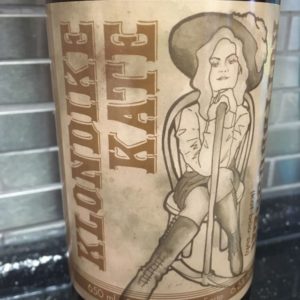I admit I am writing this post so I can type the word “Kottbusser”. It would be even better if I could say it out loud 10 times, it is such a fun word.
What is Kottbusser, you wonder? I am glad you asked. Kottbusser is an historic German ale popular in the region around Kottbuss that about 150 years ago died out, only to be re-born in recent years as a niche beer. It is one of those old regional styles that reflected a local flavour but didn’t happen to have the cache to make the jump to the industrial age of brewing.
Information on the style is somewhat sparse but my research offers up that it was made with wheat, oats, honey and molasses and was cloudy like a hefeweizen. There is some disagreement on the yeast, but it seems it was brewed with a clean ale yeast similar to Alt and went through a lagering period (some sources suggest a weizen yeast). IBUs were likely fairly low but some sources say there should be some hop flavour presence (others disagree). In general it should be a gold beer with an earthy flavour and an ale-like character and a sweetish finish.
Why am I talking about this esoteric extinct beer style? Mostly because recently the female students at the Olds College Brewmaster Program brewed one up to celebrate International Women’s Day. They call it Klondike Kate Kottbbusser (they have two b’s which is both wrong and weird).
I tried it when I was in Olds to judge their homebrew competition (read the post here), but it wasn’t the environment to truly evaluate the beer (given there was visiting to be done). But the choice of style stuck with me. I found it creative, interesting and curious.
Then I found a bottle of the beer at my local liquor store last week and knew then and there I needed to review it properly. Hence this post.
Of course, one of the problems with reviewing a beer style you have never tried is that you don’t have a benchmark upon which to judge the beer. You are going blind, so to speak. Regardless, here I go, blind or not.
It pours a very hazy light orange, forming a thin white head with some loose bubbles. The aroma gives me toffee, green apple, grainy sweetness, some light fruit, birch syrup, and touches of sharp grain to accent. It is an intriguing aroma.
The flavour starts with light toffee, wildflower honey, and a light toasted bread note. The middle brings out a noted fruitiness of light berry and apple. It also offers up an earthy character tinged with touches of yeast. The finish is relatively dry with just a touch of hop linger. Yeast and earthiness are in the finish as well.
This is a curious beer. The malt base edges toward a Vienna/Oktoberfest character but not as full. It also has an assertive yeast character and a distinct ale fruitiness and body. I also get some musty earthiness for complexity. It is like it is a hefeweizen married with a kolsch. The yeast impression is fairly dominant, as is a honey sweetness. It comes across very much as an historical beer, but I can’t quite pin down why it seems that way.
I can’t tell you whether this is a good Kottbusser or not, having never tried one before. All I can say is that it is an interesting beer that some will like and others won’t. And it seems to reflect an old way of brewing that seems completely appropriate.


May 2, 2017 at 3:48 PM
I read somewhere a while ago that Kottbusser had something to do with burning beer. Having consumed many GROLSCH that evening I could be wrong though. Interesting article and love those Olds College Brew masters. file:///home/bigsky/Downloads/slide_432868_5638880_free.jpg
May 2, 2017 at 3:55 PM
Opps sorry that did not work. I was referring to this old schlitz beer add. https://www.dragonsearch.com/blog/schlitz-beer-sexist-advertising/